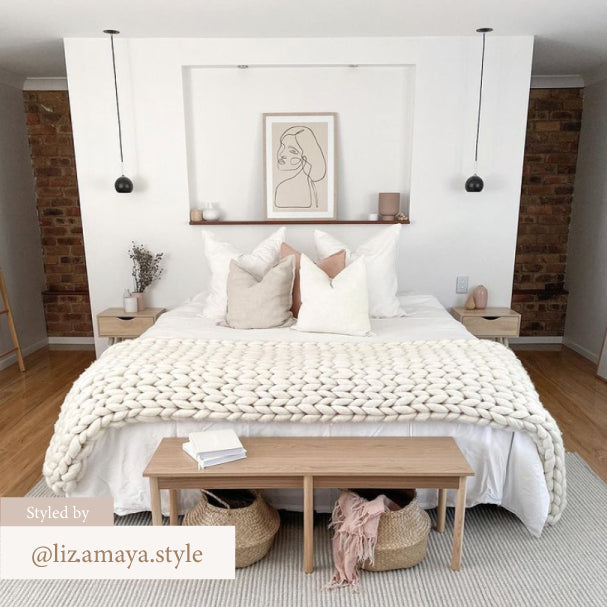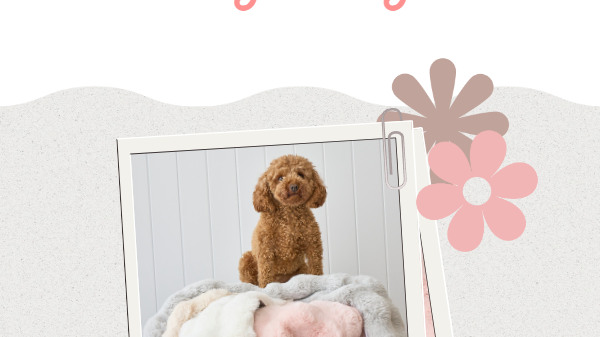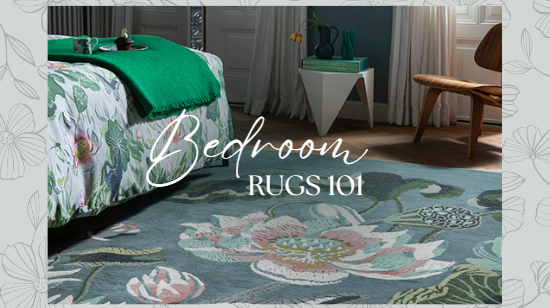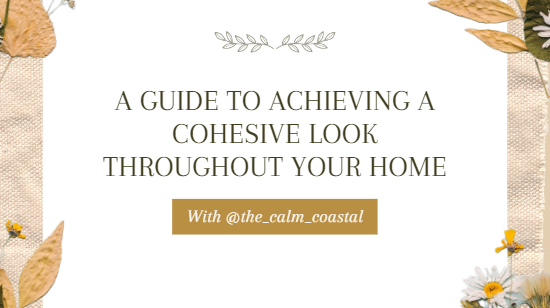



For a classic living layout, place the rug in the centre of the room and place the front legs of your sofa and armchairs on the rug. This will help create a better aesthetic and cleaner appearance.



For those who don’t want a large rug but still want a warm underfoot when getting out of bed, we recommend a round or runner rug to place at either side of the bed.



For high traffic, spill-risk areas like the dining area, we recommend a low-pile rug and easy-to-clean material like polypropylene for a rug.




Jute is highly absorbent, so it is best to avoid damp areas or spaces that may experience spills such and the bathroom, kitchen and dining areas, as liquids can stain the pile.


New wool rugs may experience some shedding within the first few months, however this will diminish overtime with frequent vacuuming.


This durable and long-lasting fibre is great for high traffic areas of the home and is both kid and pet friendly!


With viscose rugs, it is best to avoid spills and damp areas as liquids can stain the rug.
FAQ’s
My rug is shedding, what is going on?
Shedding is caused by fibres in the yarn that are cut short and got detached from the pile. Sometimes it might seem like a lot of fibre is coming out of the rug, but this is normal for a new rug and should reduce within a couple of months (but will not stop completely). Wool and viscose are both high shedding fibres. If this is something you would rather avoid, a polypropylene or polyester rug would be more suitable as these are low-shed.
My rug smells, is that normal?
In some cases, your rug might have a distinct musty or chemically smell. This smell is non-toxic and will subside after you keep the rug out in the air for a period of time. In some cases, the rug has been wrapped up for a while and has not had a chance to “air out”. The smell will dissipate in a matter of days or weeks.
Should I rotate my rug?
Rotating the rug 180 degrees every 3-6 months will ensure that the rug wears and fades evenly.
Do I really need a rug underlay?
We recommend using a rug underlay such as Total Grip with every rug. It will keep your rug in place, extending the life of your rug and prevent it from curling, wrinkling and slipping. A rug underlay will also help maintain the rugs shape and protect floors and carpets.
Which fibre is best for an area rug: natural or synthetic?
Natural and synthetic fibres each possess unique characteristics. Synthetic fibres like polypropylene and polyester offer a high degree of durability and stain resistance, meaning it is difficult to wear them out. Natural fibers like wool and cotton have been around for centuries and offer vivid colours, excellent wearability and great appearance retention.
Which fibre is best for an area rug: natural or synthetic?
We recommend having your rugs cleaned only when it is needed. If your rug gets heavy use, cleaning once a year is fine. Average wear and tear necessitates a professional cleaning only once every 2-3 years. Regular vacuuming is recommended to keep your rug in the best shape possible. Use extra caution when cleaning handmade rugs, professional cleaning is recommended.
How do I store my area rug?
A rug in storage, especially if it has not been professionally cleaned and properly prepared for storage, can be damaged in a relatively short time. Rolling it for storage is generally the most beneficial. Wrap your carpet in a breathable fabric like a cotton sheet or muslin to keep it protected. If you want expert-level protection, consider wrapping your rug in a polyurethane rug wrap. These rug wraps are designed to provide a superior barrier against dampness and insects and will be more effective than muslin. Do not use plastic to wrap your rug, since it will keep it from breathing. Store the rug off the ground in a cool, and in a dry environment, checking the rug for any signs of damage every few months.
Why is my area rug fading?
When exposed to sunlight, rug colours typically fade over time, even if they are fade resistant. Direct sunlight will cause fading faster than indirect sunlight. Jute and wool will fade the fastest. Polyester, acrylic and nylon will fade slower than natural fibres and polypropylene is the most fade resistant. If the rug is partially covered by furniture, you may notice that the exposed portions of the rug have changed colour - this is a normal occurrence. We recommend that you keep the shades drawn during the time of day when the rug is exposed to direct sunlight.
My rug is creased/not lying flat - what do I do?
Buckling/creasing or not lying flat can be common with new rugs. The best way to speed up the rug relaxing flat is to reverse-roll / back-roll the rug and apply pressure at the same time on the area where the rug is creased / folded. Leave it back-rolled for a few hours or overnight to give the rug some time for its tension to relax. Then, lay it out again and see how well it worked. If needed, redo your reverse roll and repeat. If the above does not work, also try lying the rug out in the sun for a couple of hours to warm up and loosen the back of the rug to help it lie flat.
I am putting a rug in my childs room, is it safe?
All of our rugs are safe for household use under Australian law and regulation. Wool and jute rugs do shed, please note this if you have a young child that may put these fibres in their mouth. Polypropylene and polyester are great options as they do not shed and are incredibly durable. Ensure to air the rug out before putting into the room as they can have a chemical smell when first unwrapped.
Can I put any rug outside if it is under shelter?
Only use a rug made for outdoor use outside. Our outdoor rugs are UV stable for up to 100 continuous hours and are able to get damp unlike indoor rugs. To extend the life of your rug, it is suited to a partially/fully covered outdoor area and it is best to avoid allowing the rug to get wet where possible as this will make it heavy and difficult to dry. To assist with drying, lay the rug on a flat, elevated surface with airflow. Hanging over an object when drying may cause it to warp slightly.
What chemicals are used in my rug?
All of our rugs are safe for household use under Australian law and regulation and are non-toxic.
There is a tuft sticking out from my rug, what do I do?
If your rug is hand made, woven, braided, woven in anyway, there will be imperfections and inconsistencies. Tufts/sprouts are perfectly normal, especially where the end of the yarn pops up from being tucked under the weave. You can push these tufts back in using a blunt instrument.
Why does my rug look different in my house compared to online?
Our images are taken in a studio which has a professional, white lighting and expensive camera equipment, so we can give the best indication of what the product colours are. Your home will have darker lighting and different coloured lighting. The rug will look darker with less natural light and in any warm lighting. There is an element of risk in purchasing any home décor product online. Even when purchasing in a retail store, a product may not appear the same in the customers home as in the store.
Keeping it Clean
The same consideration should go into caring for your rug, as you would do for a beautiful sweater—is it wool, it is cashmere, do I need to hand wash or dry clean? Your rug you will thank you with years of service.
Vacuuming
- Canister vacuums without beater bars are the optimal type of vacuum to use on rugs
- Brooms and manual sweepers are also a gentle and effective way to clean rugs
- If you must use an upright vacuum, use the handheld attachment whenever possible
- Refrain from running the vacuum over the edges of the rug or the rugs.
- Instead, use the handheld attachment or carefully place the vacuum on the rug
- If a rug is reversible remember to vacuum both sides.
- For hand woven rugs, use extra caution when vacuuming as the suction can pull the weave, alternatively, you can take the rug outside to shake it out
Rotate
It is highly recommended to rotate your rug 180 degrees every 3-6 months to balance appearance, fading and to distribute wear evenly.
Outdoor Rugs
- Outdoor Safe products require regular care and cleaning
- To extend the life of your outdoor rug store the rug rolled and in the shade when not in use
- Leaving an outdoor rug in direct or indirect sunlight outdoors may cause fading
Professional cleaning
- Use extra caution when cleaning handmade rugs, professional cleaning is recommended.
- When in doubt, spot clean and use a professional cleaner
(Wine) Spills and Stains
- Clean spills immediately
- Once a stain is set is becomes much more difficult to clean
- Blot the spill with a dry cotton cloth or a clean paper towel
- Work from the outer edges of the spill towards the centre to prevent spreading
- Never rub a spill as this forces the spill deeper into the rug
- To remove any residual staining, dampen a cotton cloth or clean paper towel with clean, cold/lukewarm water. Gently blot with the damp cloth and quickly absorb the moisture on the rug
- Please note that Viscose and Tencel rugs should never be cleaned with any water or liquid







